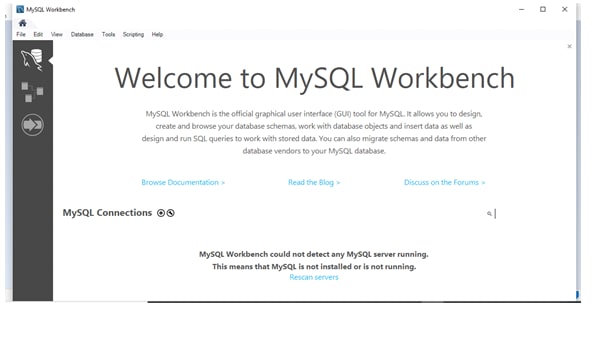

Developers and DBAs can use the visual tools for configuring servers, administering users, performing backup and recovery, inspecting audit data, and viewing database health. MySQL Workbench provides a visual console to easily administer MySQL environments and gain better visibility into databases. The Object Browser provides instant access to database schema and objects. The Database Connections Panel enables developers to easily manage standard database connections, including MySQL Fabric. The SQL Editor provides color syntax highlighting, auto-complete, reuse of SQL snippets, and execution history of SQL. MySQL Workbench delivers visual tools for creating, executing, and optimizing SQL queries. It includes everything a data modeler needs for creating complex ER models, forward and reverse engineering, and also delivers key features for performing difficult change management and documentation tasks that normally require much time and effort. MySQL Workbench enables a DBA, developer, or data architect to visually design, model, generate, and manage databases. Then create a file at /usr/local/etc/php/7.4/conf.d/ext-redis.ini with these contents: Īfter doing all of this, I'd recommend running valet restart.MySQL Workbench is a next-generation visual database design application that can be used to efficiently design, manage and document database schemata. Remove the extension="redis.so" line that PECL added at the top of /usr/local/etc/php/7.4/php.ini. These steps are optional, but it's more in line with how extensions should be loaded in modern php versions. I prefer to move this line to its own extension file. The workaround is to run this to start Redis server as a daemon: sudo redis-server -daemonize yesīy default, PECL plops a new extension="redis.so" line at the top of the main php.ini file. For some reason, this command only works with sudo right now. That command just runs redis-server under the hood. Normally you'd use arm brew services start to start Redis (and at login), but it's not working yet.
MYSQL WORKBENCH M1 MAC INSTALL
Next, install the Redis PHP extension with PECL - pecl install redis.

Until then, we can start the server manually.įirst, run arm brew install redis to install it. It installs via brew, but starting the Redis server doesn't work correctly (even though brew says it does). Redis presented the only real speed bump I've encountered thus far. Run the following commands: composer global require laravel/valetĪfter that, I also ran cd ~/Code & valet park. Installing Valet should work as normal now. Perhaps calling it x86 would be better? Shoutout to Matt Stauffer for posting this. It makes a nice arm alias for running commands with x86_64 architecture flags. usr/sbin/softwareupdate -install-rosetta -agree-to-license Install Rosetta on the command line with the following: They don't have an ARM-compatible build ready yet, so this is where we'll need to use some Rosetta flags on the command line. Homebrewįirst, we'll need to install Homebrew. It mostly feels invisible, so (except for a few terminal commands like homebrew) you hardly even notice it is there. I expected to have way more problems being an early adopter, but Apple has done a wonderful job with their Rosetta 2 translation layer. Unless you're using Docker, which doesn't work on the new ARM processor (yet - they're working on it).
MYSQL WORKBENCH M1 MAC MAC
Setting up an M1 mac for PHP development is not much different than other macs. The previous article outlines first impressions from the perspective of someone upgrading from a 2013 mac.

Homebrew now has an M1-compatible version, so you may be able to use that instead, but I haven't tested it yet! If you want to try it, just ignore the Rosetta stuff and take out the arm from the rest of the commands. Heads up! I wrote this when M1 Macs were new. We'll set up Homebrew, PHP, MySQL, Composer, and Laravel Valet.

This article outlines how I was able to set it up for doing web development.
MYSQL WORKBENCH M1 MAC PRO
Friday, I received a snazzy new M1 Macbook Pro in the mail.


 0 kommentar(er)
0 kommentar(er)
